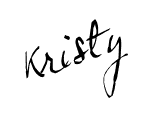Anyhoo, back to the topic at hand. Last time we talked about the first five steps to excellent writing with primary kids. Today, we'll discuss the last five.
Writing - I know that when we start writing, I always model the writing first. The thing that struck me from this book was the statement, "Expect that some children will copy your models." Now, this struck me because I know that when I model in front of the class, I've always asked the kids NOT to copy my writing. I mean, then it's my writing and not theirs, right? After reading this, though, I realize that allowing them to copy my models a little in the beginning allows them to safely practice the skills we've been talking about and builds confidence in them to write on their own. Do any of you allow them to copy your models for their writng? And, if you do, how long do you allow this to go on before requiring them to write on their own?
Reading - This is the one that should be the easiest, but that my kids have always had the hardest time with. I don't know how many times a student would bring me their paper and I would ask them, "Before you show it to me, did you read it?" Most of the time, they would look at me with this blank stare, or say, "Oh, I forgot!" or tell me they did when I could clearly tell that they hadn't. Forney suggests reading the students writing into a tape recorder (or some other recording device) and allowing them to listen to their writing being read back to them. She also says that a "guest" reader such as a student from an older class read their writing. This sounds interesting, but time consuming. Often, I just read the paper back to the student so they can hear what they have written.
Revising - This is the part that I need to work on getting the kids excited about. Adding more to their writing is an important step, but one that most of my students don't really want to do. Perhaps they've picked up on my reluctance to write/teach writing and that is rubbing off on them. This is something that I really need to work on.
Editing - I've always wondered how to effectively teach editing to my firsties. I mean, they are just learning about which words should be capital and where the ending marks go, so how are they able to really edit their own papers? I know that modeling is a HUGE component in teaching this skill and I guess I've just been asking them to do it too early and without the sufficient foundation.
Sharing - This is one area that really gets pushed to the back burner in my class. We usually only share if we have extra time. I need to make sure this year that I work sharing time in.
I want to make a cute poster with these 10 steps on them so that I can remember to incorporate each step into my writing instruction this year. The problem is, I'm at my mom's house until the 21st and all of my cute fonts, clip arts, etc. are on my home computer. I promise as soon as I get it made, I'll post it here for you.
Tomorrow, we'll talk about word walls in the classroom!


LOVE Kettle Corn!
ReplyDeleteJennifer
First Grade Blue Skies